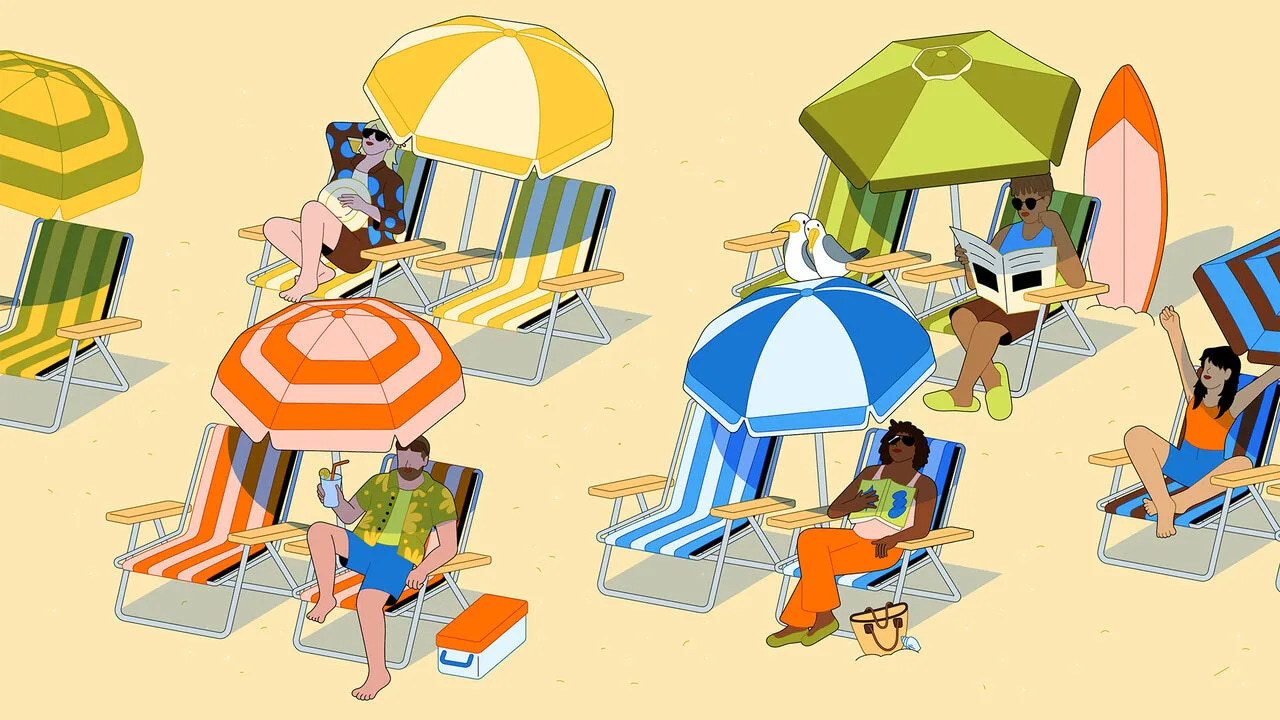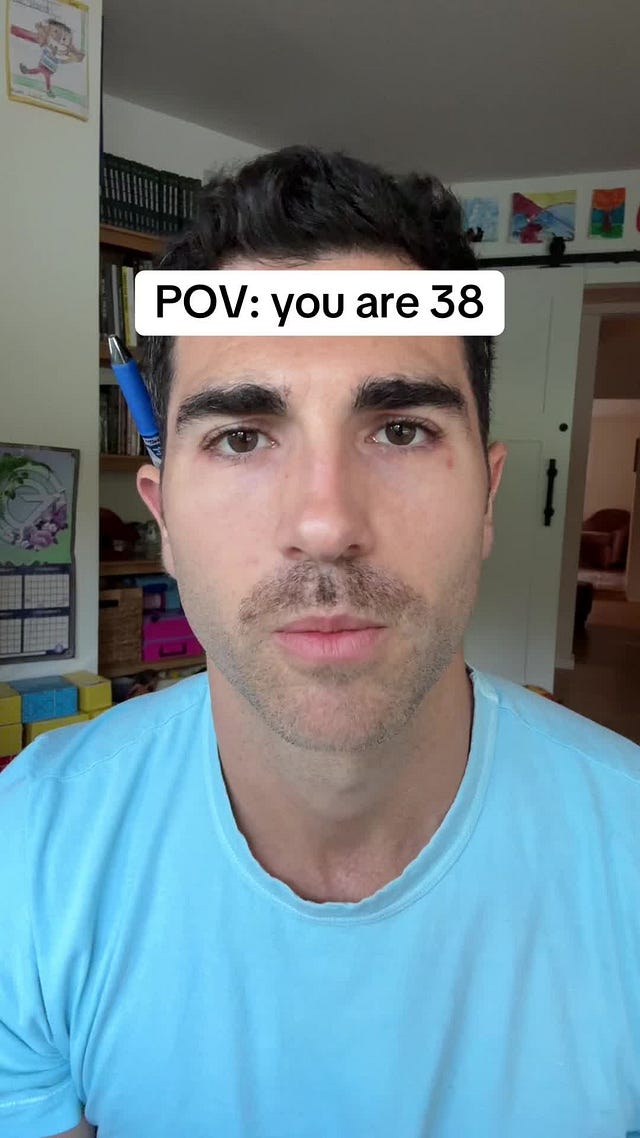Honeymoon preamble
Plus, my 2c on whether having a boyfriend is embarrassing (Nah)
There are few hills I’ll die on. One of them: a well-traveled person is not superior to a less-traveled one. I used to frown at dating profiles lined with flag emojis. (Most tasteful if employed by a pilot—then, a “third culture kid,” proud biracial person, and “globetrotter,” in that order.) I nod hollowly when someone describes their ideal partner as “loves to travel” or “has an international background.” Oddly, I wound up with someone who has both.
For our honeymoon, Mo and I were going to “full send” it to India. I’ve never been. He lived briefly in Mumbai. But tackling India as a Westerner seems akin to hosting Thanksgiving for the first time—there is great risk of overwhelm—and I did not want to thrust him into the front lines of trip planning, where he usually stands. I thought he could join me in my ivory tower.
Tomorrow we’re flying to Mexico for the fourth time together, where we’ll stay at a gargantuan resort in Playa del Carmen built for the tourist seeking Severance-style detachment from their prefrontal cortex. For the next week, you can find us reading tipsy* by the pool (a new one every day, if we like!) and riding golf carts on warm pavement. I will be searching for the perfect tacos de camarón, and Mo will be reflexively replying to locals with “oui” and “merci” because his lizard brain defaults to French when accessing its “foreign language.” So does mine, but growing up in Southern California makes us “built different.”
After PDC we’ll scoot over to Mexico City to eat street food that mildly inflames us and peek at the hotel where a James Bond movie was filmed. We have a res at Pujol—which I suspect will not be worth the hype—and Esquina Común, a restaurant in a “550-square-foot second-floor apartment on a leafy side street in the city’s Roma district.” It, too, has probably lost its edge. The New York Times wrote about it in 2022. As I alluded, research for this “once in a lifetime” vacation has not been sophisticated. We will be riding mostly on “vibes.”
I’m team Mexico > Hawaii when it comes to low-lift tropical vacations for Californians. Once on a first date over milkshakes and fries, I got into a charming debate about it. My talking points: closer, cheaper, friendlier, more delicious, more “exotic”…
He was flying to Hawaii the next day. He never texted me when he got back.
*I picked up this book. Mo is reading about the Roman Empire for real.
In this Note: Tech bros are getting face-lifts, old people are addicted to their screens, reluctant women breadwinners, and the ‘bird theory’ test.
Have a story or topic I should look into? Write to me at: fendiliudufner@gmail.com. You can also reply to this email if you’re reading from inbox. 💌
Silicon Valley glamorizes youth. So tech bros are getting face-lifts, Botox, blephs, and more. In 2014, investor Peter Thiel (PayPal, Palantir) told an executive, “you can’t hire anyone over 30.” More than ten years later, the sentiment is stronger than ever. (I just watched a TikTok about VCs preferring founders under 25.) San Francisco psychoanalyst Dr. Stephen Sabin said his male clients are expressing concerns around aging out. “Historically, if men were accomplished, they were respected regardless of what they looked like, whereas a woman, no matter how accomplished, had to look good to be admired,” said a Bay Area plastic surgeon. Now men feel “their accomplishments aren’t enough. They have to look the part too.”
Elderly people are addicted to their screens, just like teenagers. Britain’s clinic for gaming addiction has begun treating people in their 60s and 70s, part of a wider trend of retirees glued to phones, tablets, and TVs. The risks are real: doom-scrolling, scams, insomnia without the oversight of teachers or parents, but so are the upsides: Zoom church, WhatsApp family chats, and nostalgia on YouTube. Researchers note that while older adults may “overdo it,” their screen use can also keep their minds active.
Katy Perry and Justin Trudeau are a couple. I like a cross-sector romance. It feels well rounded.
For a lasting marriage, two personality traits matter most: openness and mutual trust. In the dating pool, men look for fertility cues (health, appearance) and women look for resource cues (wealth, ambition). (Women also regard creative men as attractive, perhaps because it’s a cue for intelligence and, therefore, future resources.) But decades down the line, “positive emotional behavior” counts most in a relationship—like loyalty and dependability, humor and validation. Researchers also found that couples of faith are happier if they grow more religious over the years and practice together.
Dating apps are flailing because young people want to meet in person. More than 75% of Gen Zers feel burnt out using dating apps. They want to meet a partner in person—preferably in a ‘meet-cute’ like Carrie and Big on the streets of Manhattan. The numbers back this up. First-quarter profits for Match Group (Tinder, Hinge, Match.com, Plenty of Fish, The League, “and more!”) came in at $117.6 million, compared to $123.2 million in 2024, and paid usership was down 5% from a year ago at 14.2 million users.
Modern mothers don’t have “the village” they’re encouraged to lean on. Most live too far from family to reap any benefits and most friends have their hands just as full. The result: a generation of women trying to DIY community. Some mothers “buy” their village—nannies, food delivery, house cleaners. But most just go without. Encouraging women to tap into their community is “an individualistic solution to a societal problem.” What would really help: longer parental leave, more flexible remote-work policies, and child-care support.
Having a boyfriend may be going “out of style.” The hottest discourse of the last two weeks was whether having a boyfriend is cringe now. Some women believe it’s “lame” or “culturally loserish"—that a boyfriend takes a hit on a woman’s aura. My 2c: The opposite of love is not hate, it’s indifference. Being anti-man or anti-relationships with men is still centering men—in a different way. Unfortunately, but not surprisingly, it appears women have found another way to self-categorize while subconsciously pitting themselves against each other. Meanwhile, men are not talking about this at all. I like this take.
Unemployment is hard, especially for men—and especially for their spouses. As long-term unemployment climbs, more women are finding themselves as reluctant breadwinners to husbands who can’t land jobs (and won’t go to therapy). The Cut profiled three women struggling to balance compassion with simmering rage: one pays the bills while still running the household, another walks on eggshells around her husband’s tanking confidence, a third wonders what her husband does all day. Their two-year-old daughter is in childcare. I wish the editors included the perspective of a man with an unemployed wife, but we all know why they didn’t.
 Tiktok failed to load.
Tiktok failed to load.Enable 3rd party cookies or use another browser
All over the rich world, singlehood is rising. Some latest stats about what The Economist calls a “relationship recession”: In the U.S., 41% of women and 50% of men aged 25–34 are single—double the rate from 50 years ago—and similar trends are playing out across Europe and Asia. In case you haven’t heard, educated women are marrying later (or not at all), while men without degrees are struggling to find partners. Add the psychological warfare of online dating, growing political divides, and less in-person socializing, and the result is immediately bleak.
“Friend” is a viral AI necklace you can talk to. It costs $129 and arrives in a “matte-white box, Applelish down to the sharp corners and minimalist manual.” It can’t speak back (yet!), but it can text you in an app. Its creator, Avi Schiffmann (23, Harvard dropout), raised millions to market it as a digital bestie, but most people find it creepy, despite an estimated 20 percent of Americans (and 72 percent of American teenagers) having turned to AI for social company. Passersby in Manhattan subway stations are vandalizing Friend ads with glee.
Frolly is a new dating app for “dog people.” I’m just gonna say it: Only in America.
Tell your partner you saw a bird today and see how they respond. If they ask a follow-up question (“What kind of bird?”) or offer a positive remark (“I saw a blue jay the other day too!”)—they pass. If they ignore you or question your intentions—they fail. The ‘bird theory’ test is based on Dr. John Gottman’s research on “bids for connection.” A “bid,” as he calls it, is any comment (often seemingly insignificant like mentioning a bird) made towards a partner in an effort to connect. As the recipient, the right thing to do is take the bid. After all, romance is not made up of grand, sweeping gestures. It’s made up of a million micro-moments that build trust and safety.






